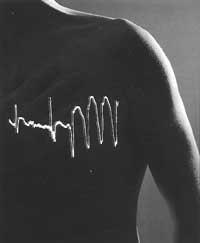What to do after a heart attack?
Heart infarction (more specifically, myocardial infarction) occurs when blood flow is interrupted and not enough blood is reached into the muscle or myocardium of the heart. This causes the death of this area of the heart because it does not receive either oxygen or food.
Before suffering a heart attack, some special symptoms appear today or even weeks earlier: in the center of the chest there is pain or feeling of crushing that can spread to the arms, neck, gag or shoulders. In some cases, sweats, nausea, vomiting, and dizziness (or even fainting) may appear. In 25% of cases, however, this notice does not occur.
Causes of infarction

The most frequent causes of obstruction of a coronary artery, with the consequent obstruction of blood circulation and an infarction are:
- Inside a glass of blood is formed a blood clot (a thrombus). This may be due to an alteration in this blood vessel or a change in the composition of the blood. When one of these two situations occurs, thrombosis is discussed and as a treatment anticoagulants (drugs to avoid blood clots or coacids) and vasodilators (to extend the caliber of the artery through which the blood is passed) are used. In the most severe cases, surgery may be needed to remove thrombus and maintain normal blood flow.
- Some foreign body, such as a fat or air bubble, is embedded in the blood vessel. This obstruction is known as a plunger and hence the name of a plunger. It may occur that the plunger has a small diameter and circulates freely through the vessels without any problem. But when the plunger size is larger than that of the vessel, problems arise. The treatment is usually surgical, since the plunger should be removed by an operation, but the treatment can be medical with stamping drugs as in the previous case.
- The process of an artery that is prolonged and constant is called vasospasm and if its duration is prolonged from a point, we could say that an infarction or an infarction will occur.
What to do before the infarction?
In case of loss of consciousness or cardiac arrest, the resuscitation of the affected person will be attempted, always before 4 minutes pass, since from that time can occur brain damage (in many cases irreversible) and even death.
And how to make that resurrection or resuscitation of the heart? A cardiac massage and artificial breathing should be performed, both methods at a time, ensuring that there are no foreign bodies inside the mouth and that the tongue is in its normal position (and not backwards).
If it is a child (something rare, but unfortunately it can happen) you have to be especially careful when performing artificial breathing and not put too much air into the child.
If we do not know how to do resuscitation (and at this point we will all have doubts, more or less) immediately call an ambulance or seek an expert, not necessarily a doctor, but a person with some experience in these matters.
The important thing is to immediately transfer the patient to a hospital, since if the right medications are given within two hours of the onset of the first symptoms of the infarction, the subsequent sequels are much smaller.
After infarction, what?
The recovery statistics are quite good and satisfactory, as from infarctions, two out of three are recovered in people. Do not forget that the patient must be attended as soon as possible.
An adequate rehabilitation program after sending home should recommend a physical exercise adapted to the capacities and tastes of the patient, as well as psychological help, since the fear of a normal life after an infarction is very widespread, and against it we must warn the patient that if we take care of it a little can have a life (or better) as before suffering the infarction.
But, what to do to prevent infarction?You may know the following points, as I have mentioned many times in these pages of Elhuyar, but in the confidence that I will get something, you will find again the main risk factors that can add the possibility of a heart attack:
Statistics show that large smokers (more than 10 cigarettes a day is enough to enter this group) have a risk of suffering a myocardial infarction four times greater than those who do not smoke or who smoke little. The 80% of the victims of infarction who arrive in the hospitals are smokers, who lead a sedentary life, and more and more women (who have joined the smoking group in recent years). |
Buletina
Bidali zure helbide elektronikoa eta jaso asteroko buletina zure sarrera-ontzian











